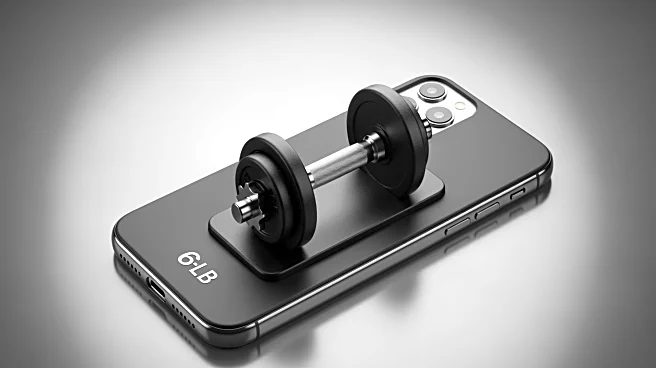What's Happening?
A neuroscientist has created a six-pound phone case designed to reduce screen time and combat doomscrolling addiction. The heavy phone case, developed by Logan Ivey, founder of Matter Neuroscience, aims to make casual phone use physically uncomfortable,
thereby encouraging users to limit their screen time. Ivey's approach involves attaching a dumbbell to a standard phone case, transforming the phone into a cumbersome object that discourages mindless app browsing. This method has reportedly reduced Ivey's screen time from over four hours a day to just two hours a week, effectively turning the phone back into a tool rather than a trap.
Why It's Important?
The development of this phone case addresses the growing concern over smartphone addiction, which is considered a significant mental drain in modern life. By physically altering the ease of phone use, this invention offers a non-technological solution to a tech-driven problem. It highlights the potential for innovative approaches to tackle behavioral issues associated with excessive screen time. This could influence public health strategies and encourage further exploration of physical interventions in digital addiction management, potentially benefiting individuals seeking to reduce their dependency on smartphones.
What's Next?
The success of this prototype may inspire further research and development in the field of digital addiction solutions. It could lead to the production of similar devices aimed at reducing screen time and promoting healthier tech habits. Additionally, this approach might attract interest from mental health professionals and tech companies looking to address the negative impacts of excessive smartphone use. As awareness of digital addiction grows, more individuals and organizations may seek out physical solutions to complement existing digital wellness strategies.
Beyond the Headlines
This invention raises ethical questions about the balance between technology use and mental health. It challenges the reliance on digital solutions to combat digital problems, suggesting that physical interventions might offer a more effective approach. The concept of using physical discomfort to alter behavior could extend to other areas of tech addiction, prompting discussions on the role of physical design in promoting healthier habits.

















